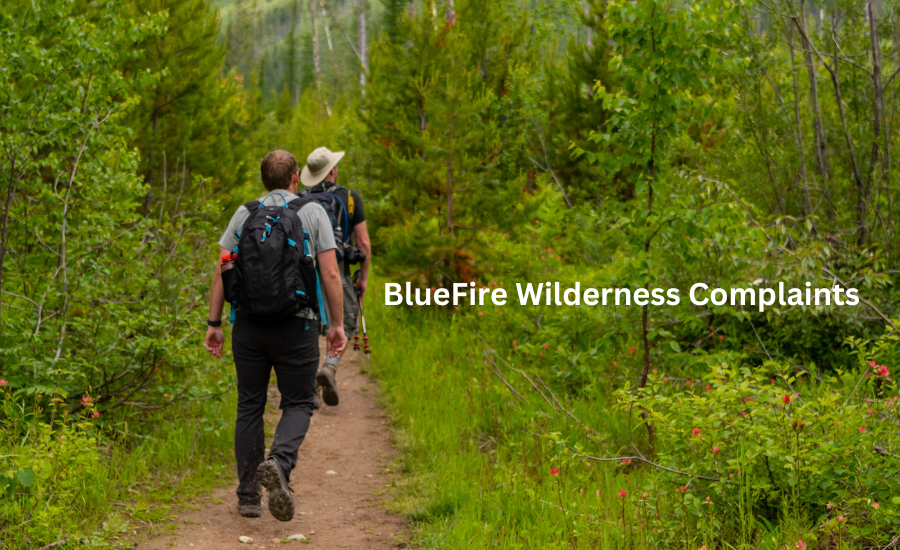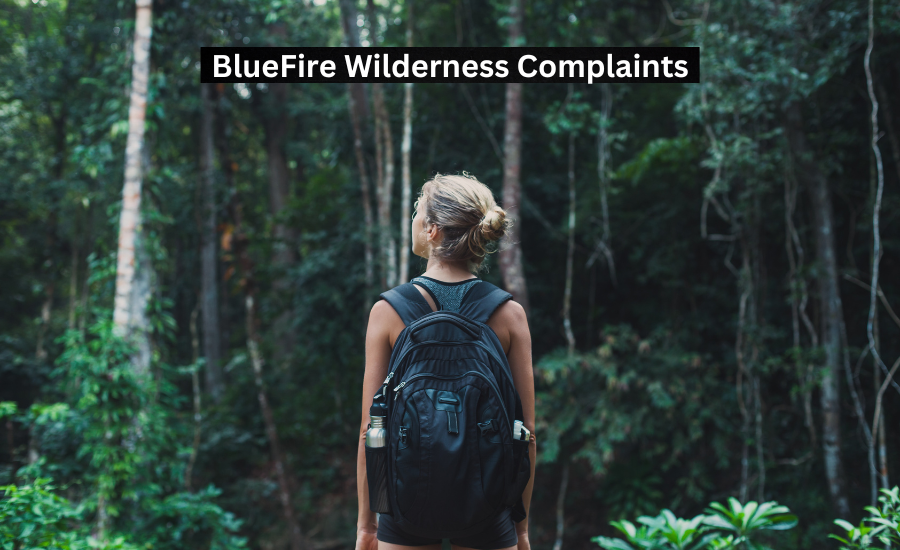Exclusive Documentary On BlueFire Wilderness Complaints
Introduction to BlueFire Wilderness Complaints
Are you Curious to know about BlueFire Wilderness Complaints? Let’s unhide the scenes!
BlueFire Wilderness is a program designed to support young people struggling with emotional, behavioral, and mental health issues by immersing them in nature. The program aims to foster healing and personal growth through outdoor activities and therapy sessions conducted in a wilderness setting. Known for its distinctive approach to wilderness therapy, BlueFire Wilderness has earned a reputation for effectively helping teenagers and young adults navigate their challenges. Its success in transforming lives and leveraging the natural environment for therapeutic purposes has contributed to its widespread popularity and recognition in the field.
Did You Know About BlueFire Wilderness Complaints?
- Safety Concerns: Some families and participants have expressed worries about safety during activities and the adequacy of supervision in wilderness settings.
- Program Costs: The high program costs have been a significant complaint, making it difficult for many families to afford treatment.
- Staff Behavior: Concerns have been raised about the professionalism and empathy of staff members in handling situations.
- Communication Issues: Some families feel left out of the loop regarding their children’s progress and experiences in the program, highlighting communication gaps.
- Impact on Reputation: These complaints have affected BlueFire Wilderness’s reputation and enrollment, with potential clients being hesitant to enroll due to negative reviews and highlighted issues.
These BlueFire Wilderness Complaints underscore the importance of addressing safety, cost, staff behavior, and communication to ensure a positive experience for participants and families.
Documentary On BlueFire Wilderness Complaints

BlueFire Wilderness has encountered various complaints over time, primarily revolving around safety concerns, program costs, staff behavior, and communication issues. Families and participants have expressed worries about the adequacy of the program’s safety measures, fearing for the well-being of those involved. The high cost of the program is another significant issue, as the fees can be prohibitively expensive for many families, making it challenging to access the treatment.
Staff behavior has also been a point of contention, with some reports suggesting that staff members may lack the necessary professionalism or empathy when handling situations. Additionally, communication issues have been raised, with families feeling excluded from updates about their children’s progress and experiences within the program.
These complaints have taken a toll on BlueFire Wilderness’s reputation and enrollment numbers. Negative reviews and highlighted issues from past participants often make potential clients hesitant to enroll, leading to a decrease in new enrollments and impacting the program’s overall success and operation.
Addressing Safety Concerns and Implementing Measures
Safety concerns have been a significant point of complaint at BlueFire Wilderness. Families and participants have raised issues regarding both physical safety during activities and emotional safety in handling personal and group conflicts. These concerns include inadequate supervision in wilderness settings and the qualifications of staff managing complex emotional issues among participants.
To address these issues, BlueFire Wilderness has implemented several measures to improve safety protocols and staff training. They have instituted stricter hiring practices to ensure all staff members are thoroughly trained and certified in both wilderness safety and therapeutic intervention techniques. Additionally, the program has increased the frequency and comprehensiveness of its staff training programs, with a focus on emergency response, risk management, and conflict resolution.
The program has also upgraded its equipment and safety gear, updated safety guidelines, and increased supervision during high-risk activities. Regular safety audits and reviews are conducted to continually refine and enhance these measures. These steps are designed to address and mitigate the safety concerns raised by participants and their families, ensuring a secure environment that supports therapeutic work.
Evaluating Program Costs and Financial Considerations
The high costs associated with BlueFire Wilderness pose a significant challenge for many families. The program’s extensive therapeutic services and outdoor activities contribute to its expense, often reaching
Program Costs and Financial Concerns
The high costs associated with BlueFire Wilderness pose a significant challenge for many families. The program’s extensive therapeutic services and outdoor activities contribute to its expense, often reaching tens of thousands of dollars for a full course of treatment. This substantial price tag puts the program out of reach for some families and adds financial strain for others who stretch their budgets to cover the fees.
This financial burden has several implications. It limits access to the program for those who might benefit most but cannot afford it. This financial exclusivity can create a perception that the program is only for the wealthy, affecting its public image and accessibility. Additionally, the high cost raises expectations among families who do invest in the program, anticipating significant and visible outcomes. When these expectations are not met, dissatisfaction can arise, further impacting the program’s reputation and leading to more complaints.
To address these concerns, BlueFire Wilderness might explore options like offering financial aid, implementing sliding scale fees based on income, or partnering with insurance companies to make their services more affordable.
Assessing Staff Qualifications and Training Requirements

At BlueFire Wilderness, staff qualifications are designed to ensure that team members are well-prepared for the challenges of wilderness therapy. Staff are generally required to have at least a bachelor’s degree in fields such as psychology, social work, or outdoor education. They must also possess certifications in first aid, CPR, and wilderness first responder training, all of which are crucial for ensuring participant safety in remote settings.
The training programs and certifications for staff are comprehensive and ongoing. These programs cover essential skills like therapeutic intervention techniques, crisis management, and effective communication with participants facing emotional or behavioral challenges. Staff members also receive continuous training tailored to the specific needs of the youth they work with, such as those with ADHD, depression, or anxiety disorders.
Additionally, BlueFire Wilderness places a strong emphasis on ethical conduct and sensitivity training. This ensures that staff can provide a supportive and inclusive environment for all participants. This approach aims to maximize the therapeutic impact of the program while ensuring the safety and respect of all individuals involved.
Reviewing Treatment Efficacy and Therapeutic Approaches
At BlueFire Wilderness, the effectiveness of therapy is continually assessed through ongoing evaluations and feedback from participants and their families. The program aims to facilitate personal growth and equip young people with better coping mechanisms through a blend of wilderness experiences and therapeutic support. Success stories and testimonials often underscore notable improvements in mental health, behavior, and emotional resilience, reflecting the program’s efficacy.Enhancing Family Involvement and Communication Methods
BlueFire Wilderness employs various therapeutic interventions to achieve these outcomes:
Cognitive Behavioral Therapy (CBT):
This therapy assists participants in recognizing and modifying negative thought patterns and behaviors, effectively addressing issues like anxiety and depression.
Dialectical Behavior Therapy (DBT):
DBT focuses on imparting skills to manage emotions, enhance relationships, and cope with stress more effectively.
Group Therapy:
Conducted amidst the wilderness surroundings, group therapy helps participants develop social skills, learn from peers, and provide mutual support.
Adventure Therapy:
Structured outdoor activities teach teamwork, leadership, and problem-solving, offering physical challenges that foster self-esteem and personal growth.
Family Therapy:
Involving families in the therapeutic process aims to improve communication, resolve conflicts, and support the participant’s treatment plan.
These interventions leverage the calming and restorative aspects of the natural environment to enhance therapeutic outcomes. By combining physical activity, exposure to nature, and professional therapy, participants cultivate healthier relationships with themselves and others, leading to lasting positive change.
Enhancing Family Involvement and Communication Methods
At BlueFire Wilderness, the involvement of families in the therapeutic journey is deemed essential for the program’s success. Families are actively encouraged to participate in various therapy aspects, bolstering the support system for the participant. Central to this involvement are family therapy sessions, which focus on enhancing communication, resolving conflicts, and addressing any systemic issues impacting the participant’s mental health and behavior. These sessions aim to enlighten families about therapeutic objectives and how they can support their loved one’s path to recovery.
In terms of communication policies, BlueFire Wilderness has structured protocols to ensure consistent and effective interaction. These typically entail scheduled updates from program staff, offering insights into the participant’s progress, challenges, and immediate concerns. Families also have access to a liaison or counselor who can address queries and delve into the participant’s experiences in greater detail.
The program utilizes various communication methods, including letters, emails, and scheduled calls, to keep families engaged and informed. This transparent communication channel is crucial for fostering trust, maintaining transparency, and ensuring that families play an integral role in the therapeutic journey.
Managing Legal and Regulatory Matters

Like many therapeutic wilderness programs, BlueFire Wilderness has encountered legal challenges primarily related to safety, the quality of care provided, and staff qualifications. These legal issues may stem from complaints filed by participants or their families who believe the program fell short in meeting safety standards or delivering expected levels of care. In some instances, these complaints escalate into BlueFire Wilderness lawsuit alleging negligence or other deficiencies.
In response to these legal and regulatory concerns, BlueFire Wilderness has implemented several measures to ensure compliance with relevant laws and industry standards. The program regularly evaluates and updates its policies and procedures to align with evolving regulatory requirements and best practices in wilderness therapy. This includes bolstering staff training programs, enforcing stricter safety protocols, and enhancing communication channels with families to foster transparency and accountability.
Furthermore, BlueFire Wilderness collaborates with legal experts and compliance officers to monitor operations and make necessary adjustments to mitigate risks and uphold legal standards. These proactive measures underscore the program’s commitment to maintaining integrity and providing a safe, effective therapeutic environment for all participants.
Gathering Participant and Parent Feedback
Feedback from participants and their parents holds immense value in evaluating the effectiveness of BlueFire Wilderness and its impact on those involved.
Positive testimonials and success stories often underscore the transformative experiences participants undergo at BlueFire Wilderness. Many testimonials highlight significant personal growth, improved mental well-being, and heightened self-confidence attained through the program. Parents frequently commend the professionalism and compassion of the staff, noting observable positive changes in their children’s behavior and overall outlook.
Conversely, negative experiences and criticisms also contribute to the feedback pool. Some participants and families express concerns regarding the program’s cost, perceived lack of emotional support, and effectiveness of interventions. Issues like feeling unprepared for reintegration into daily life or a perceived mismatch with individual needs are common areas of dissatisfaction. BlueFire Wilderness takes these criticisms seriously, actively seeking to improve and adapt its services in response to such feedback.
Both positive and negative feedback are invaluable for prospective clients to consider and for the program itself to utilize in refining and enhancing its services to better cater to the needs of participants.
Comparing with Other Wilderness Programs
When comparing BlueFire Wilderness to other wilderness therapy programs, several factors contribute to the evaluation, including program structure, therapeutic methods, and overall effectiveness.
BlueFire Wilderness boasts strengths such as its focus on tailored treatment plans tailored to each participant’s unique needs. The program integrates evidence-based therapeutic modalities like Cognitive Behavioral Therapy (CBT) and Dialectical Behavior Therapy (DBT), recognized for their efficacy in addressing various mental health issues. Additionally, BlueFire offers a robust outdoor program incorporating adventure therapy, fostering physical health, personal responsibility, and teamwork.
However, when considering weaknesses relative to competitors, certain areas warrant attention. BlueFire Wilderness has faced criticism for its high costs, placing a financial strain on families and potentially limiting accessibility compared to programs with more diverse financial aid options or lower overall expenses. Moreover, concerns about supervision adequacy and safety measures have emerged, essential considerations given the nature of wilderness therapy. These issues have led to legal challenges and affected the program’s reputation.
Compared to established programs like Trails Carolina or Outward Bound, BlueFire Wilderness may be perceived as needing to refine certain operational aspects. For instance, Trails Carolina might offer a more structured environment with frequent therapeutic sessions, appealing to those seeking a highly organized approach.
While BlueFire Wilderness excels in personalized care and effective therapeutic practices, it faces challenges regarding cost and perceived safety concerns. Prospective participants and families should carefully weigh these factors against their specific needs and circumstances when selecting a wilderness therapy program.
People Also Ask: BlueFire Wilderness Complaints
What are common BlueFire Wilderness complaints?
Safety concerns, program costs, staff behavior, and communication issues are among the common complaints reported by families and participants.
How does BlueFire Wilderness address safety concerns?
BlueFire Wilderness implements stricter safety protocols, enhances staff training, and conducts regular safety audits to ensure participant safety in wilderness settings.
Are there financial assistance options available for BlueFire Wilderness?
BlueFire Wilderness may offer financial aid or sliding scale fees based on income to alleviate the financial burden for families.
What therapeutic interventions does BlueFire Wilderness use?
BlueFire Wilderness utilizes various therapeutic approaches, including Cognitive Behavioral Therapy (CBT), Dialectical Behavior Therapy (DBT), group therapy, adventure therapy, and family therapy.
How does BlueFire Wilderness involve families in the therapeutic process?
BlueFire Wilderness encourages active family involvement through family therapy sessions aimed at improving communication, resolving conflicts, and supporting the participant’s treatment plan.
How does BlueFire Wilderness handle participant and parent feedback?
BlueFire Wilderness values both positive and negative feedback from participants and their families, using it to improve and refine its services continuously.
How does BlueFire Wilderness compare to other wilderness therapy programs?
BlueFire Wilderness is known for its personalized treatment plans and strong therapeutic practices but may face challenges regarding cost and perceived safety concerns when compared to other programs.
Final Thoughts On BlueFire Wilderness Complaints
In conclusion, while BlueFire Wilderness has garnered praise for its therapeutic approach and personalized treatment plans, it’s important to acknowledge and address the complaints and concerns raised by participants and their families. Safety, program costs, staff behavior, and communication issues are areas that require ongoing attention and improvement.
By actively listening to feedback, implementing necessary changes, and prioritizing participant well-being, BlueFire Wilderness can work towards enhancing its effectiveness and reputation in the field of wilderness therapy. Transparency, accountability, and a commitment to continuous improvement are key in ensuring that the program remains a trusted and valuable resource for those seeking therapeutic intervention in a wilderness setting.
Stay in touch to get more news & updates on SnapChat!







